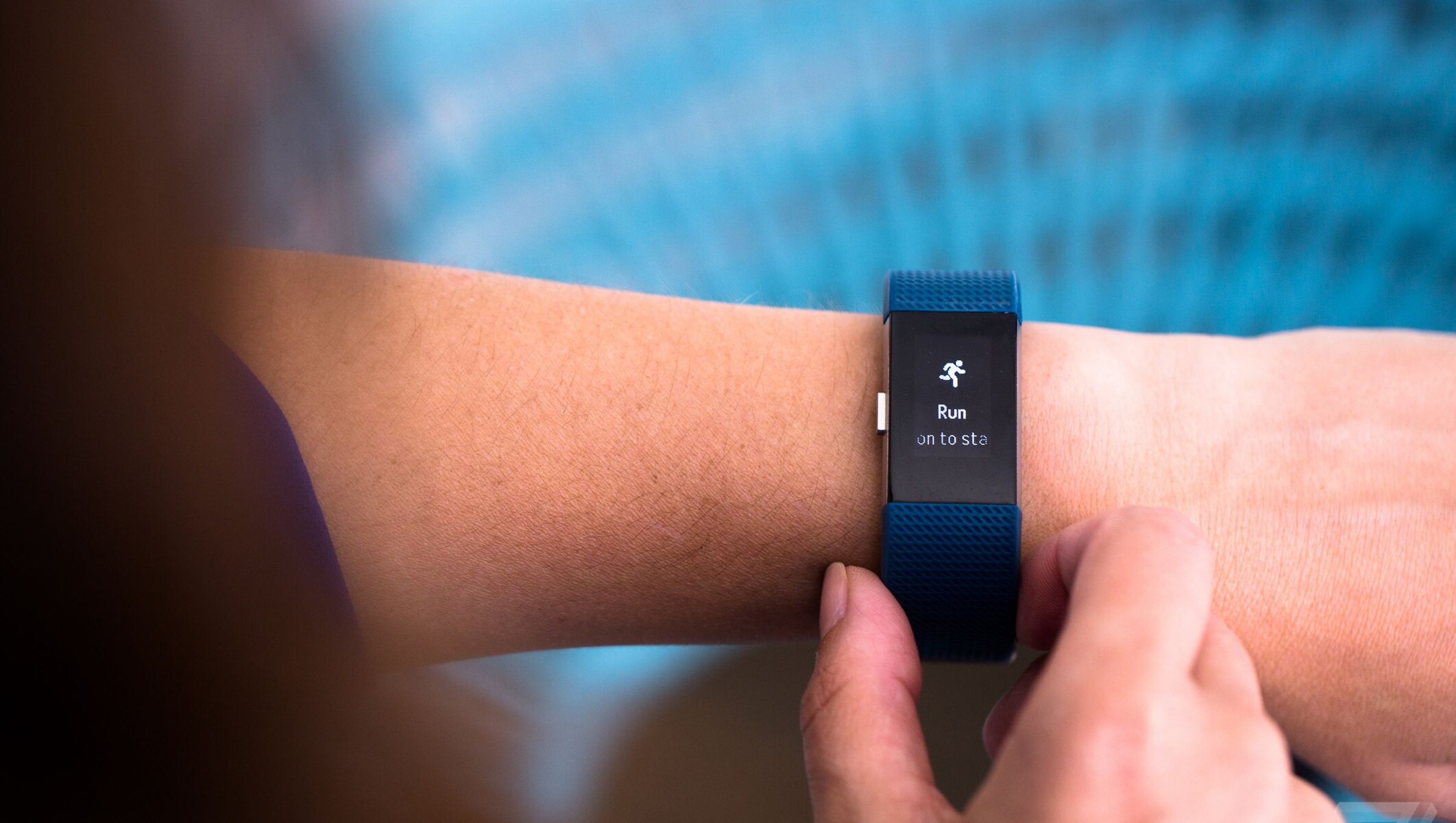Introduction
Fitbit, a pioneer in the wearable technology industry, has been a trailblazer in promoting fitness and healthy living through its innovative devices and engaging features. One such popular feature that has garnered a loyal following among Fitbit users is the Challenges function. Fitbit Challenges allowed users to compete with friends and family in various fitness activities, fostering a sense of camaraderie and motivation to achieve personal fitness goals.
Recently, Fitbit made a significant decision that has sparked discussions and reactions within its user community and the broader fitness enthusiast circle. The decision to remove the Challenges feature has left many users curious and eager to understand the rationale behind this move. This change has not only prompted a reevaluation of Fitbit's approach to user engagement but has also raised questions about the impact on the overall Fitbit experience.
In this article, we will delve into the intricacies of Fitbit's decision to remove the Challenges feature, exploring the reasons behind this strategic shift and its potential implications for Fitbit users. Furthermore, we will explore alternative solutions that may fill the void left by the absence of Challenges, ensuring that Fitbit users can continue to find motivation, inspiration, and a sense of community in their fitness journey.
As we embark on this exploration, it's essential to approach the topic with an open mind, seeking to understand the dynamics at play and the potential opportunities that may arise from this change. Let's unravel the layers of Fitbit's decision, gaining insights that will empower us to adapt and thrive in the evolving landscape of wearable fitness technology.
Overview of Fitbit Challenges
Fitbit Challenges served as a cornerstone of the Fitbit experience, offering users a platform to engage in friendly fitness competitions with their peers. These challenges were designed to inspire and motivate individuals to lead a more active lifestyle by incorporating an element of friendly competition. Users could participate in various types of challenges, such as step challenges, distance challenges, and active minutes challenges, allowing for diverse and personalized fitness experiences.
The Challenges feature enabled users to create or join existing challenge groups, fostering a sense of community and camaraderie. This social aspect of Fitbit Challenges was instrumental in creating a supportive environment where users could encourage and celebrate each other's fitness accomplishments. Whether it was competing with friends, family members, or colleagues, Fitbit Challenges provided a fun and interactive way to stay motivated and accountable in achieving fitness goals.
Moreover, Fitbit Challenges were not limited by geographical boundaries, allowing users to connect and compete with individuals across the globe. This global reach expanded the sense of community, enabling users to engage with like-minded individuals from diverse backgrounds, sharing their fitness journeys and celebrating achievements together.
The gamification aspect of Fitbit Challenges added an exciting dimension to the fitness experience. By earning badges and accolades for meeting and surpassing fitness targets, users were incentivized to push their limits and strive for continuous improvement. This gamified approach to fitness not only made the journey more enjoyable but also instilled a sense of accomplishment and pride in one's progress.
Overall, Fitbit Challenges played a pivotal role in transforming the solitary nature of fitness activities into a shared and uplifting experience. It empowered users to stay committed to their fitness routines, find inspiration in the achievements of others, and embrace a holistic approach to health and well-being.
As we reflect on the significance of Fitbit Challenges in the Fitbit ecosystem, it becomes evident that this feature was more than just a tool for tracking fitness metrics. It embodied the spirit of collaboration, encouragement, and healthy competition, enriching the overall Fitbit experience for countless users worldwide.
Reasons for Fitbit's Decision
Fitbit's decision to remove the Challenges feature stems from a strategic reevaluation of its user engagement approach and the evolving landscape of fitness technology. Several factors have likely contributed to this pivotal decision, reflecting Fitbit's commitment to innovation and user-centric design.
Firstly, as Fitbit continues to advance its product offerings and enhance the overall user experience, it is essential to streamline and optimize features to align with evolving user preferences and technological advancements. The decision to remove the Challenges feature may signify a shift towards a more streamlined and focused user experience, allowing Fitbit to allocate resources and development efforts towards features that resonate more deeply with users' current needs and expectations.
Additionally, the decision may also be influenced by a desire to introduce new and innovative features that better cater to the diverse and evolving fitness preferences of Fitbit users. By making strategic decisions to retire certain features, Fitbit can create space for the introduction of novel functionalities that align with emerging fitness trends, technological advancements, and user feedback. This proactive approach ensures that Fitbit remains at the forefront of delivering cutting-edge fitness solutions that are relevant and impactful for its user base.
Furthermore, the decision to remove the Challenges feature may also be driven by insights gathered from user data and feedback. Fitbit is renowned for its user-centric approach, leveraging data analytics and user feedback to refine and optimize its products and features. It is plausible that user engagement metrics, usage patterns, and qualitative feedback have informed Fitbit's decision, indicating a need to reallocate resources and development efforts towards features that better resonate with user preferences and contribute to a more compelling fitness experience.
Moreover, the evolving landscape of fitness technology and the proliferation of alternative fitness platforms and social fitness apps may have influenced Fitbit's decision. By adapting to the changing dynamics of the fitness technology market, Fitbit can strategically position itself to remain competitive and relevant, ensuring that its offerings continue to captivate and inspire users within an increasingly diverse and dynamic fitness ecosystem.
In essence, Fitbit's decision to remove the Challenges feature is a strategic move aimed at optimizing the user experience, aligning with evolving fitness trends, leveraging user insights, and maintaining a competitive edge in the dynamic landscape of wearable fitness technology. This decision reflects Fitbit's commitment to innovation, user-centric design, and the relentless pursuit of delivering impactful fitness solutions that resonate with users on a profound level.
Impact on Fitbit Users
The removal of the Challenges feature from the Fitbit ecosystem has reverberated across the community of Fitbit users, eliciting a spectrum of reactions and reflections on the implications of this significant change. The impact on Fitbit users can be multifaceted, encompassing emotional, motivational, and practical dimensions that resonate deeply with individuals who have embraced Fitbit as an integral part of their fitness journey.
One notable impact is the emotional response elicited by the absence of the Challenges feature. For many users, Fitbit Challenges served as a source of motivation, inspiration, and a sense of connection with friends, family, and fellow fitness enthusiasts. The camaraderie and friendly competition fostered by Challenges created a supportive and engaging environment that transcended the mere tracking of fitness metrics. The removal of this feature has left some users feeling a sense of loss, as it represented a cherished aspect of their Fitbit experience that contributed to their overall well-being and sense of community.
Furthermore, the impact extends to the motivational dynamics within the Fitbit community. Fitbit Challenges played a pivotal role in encouraging users to stay active, set and achieve fitness goals, and celebrate their progress in a communal setting. The absence of this feature may have implications for the intrinsic motivation of users, as the element of friendly competition and shared accomplishments provided a compelling incentive to maintain an active lifestyle. As a result, some users may find themselves seeking alternative sources of motivation and accountability to fill the void left by the removal of Challenges.
Practically, the impact on Fitbit users involves the need to adapt to a shift in their fitness tracking and social engagement routines. Many users integrated Fitbit Challenges into their daily or weekly fitness regimen, leveraging the feature as a cornerstone of their interactive fitness experience. The removal of Challenges necessitates a recalibration of how users approach their fitness tracking, goal setting, and social interaction within the Fitbit ecosystem. This transition may prompt users to explore alternative avenues for staying connected with their fitness community and finding new sources of motivation and accountability.
In essence, the impact on Fitbit users following the removal of the Challenges feature is profound and multifaceted. It encompasses emotional attachment, motivational dynamics, and practical adjustments within the realm of fitness tracking and social engagement. As users navigate this transition, they are poised to seek new avenues for fostering a sense of community, finding motivation, and embracing the evolving landscape of fitness technology within the Fitbit ecosystem.
Alternative Solutions for Fitness Challenges
As Fitbit users adapt to the absence of the beloved Challenges feature, it becomes imperative to explore alternative solutions that can effectively fill the void left by its removal. These alternatives should aim to provide users with avenues for maintaining motivation, fostering a sense of community, and integrating interactive elements into their fitness journey. Here are several alternative solutions that can serve as compelling substitutes for the erstwhile Fitbit Challenges:
-
Third-Party Fitness Apps and Platforms: With the proliferation of social fitness apps and platforms, Fitbit users can explore third-party solutions that offer similar features to Fitbit Challenges. These platforms often provide diverse challenges, community engagement, and gamified fitness experiences, allowing users to seamlessly transition from the Fitbit ecosystem while retaining the essence of friendly competition and shared accomplishments.
-
Social Media Fitness Communities: Leveraging social media platforms to connect with fitness communities and groups can be an effective alternative to the social engagement facilitated by Fitbit Challenges. Users can join or create fitness-focused groups on platforms such as Facebook, Instagram, or Reddit, where they can share their fitness journeys, participate in virtual challenges, and find support from like-minded individuals.
-
Personalized Fitness Challenges: Fitbit users can create personalized fitness challenges within their social circles, leveraging the existing features of the Fitbit app to set up custom challenges based on steps, distance, or active minutes. This approach empowers users to maintain a sense of camaraderie and accountability with friends and family, albeit through a more manual and personalized setup.
-
In-App Gamification and Rewards: Fitbit can potentially introduce enhanced in-app gamification features and rewards to compensate for the absence of Challenges. By incorporating virtual badges, achievement milestones, and interactive challenges directly within the Fitbit app, users can experience a renewed sense of motivation and accomplishment as they progress on their fitness journey.
-
Virtual Fitness Events and Competitions: Exploring virtual fitness events and competitions organized by fitness communities, local gyms, or wellness organizations can offer Fitbit users an immersive and engaging alternative to the community-driven nature of Fitbit Challenges. Participating in virtual races, fitness challenges, or charity events can infuse a sense of purpose and excitement into the fitness routine.
By embracing these alternative solutions, Fitbit users can navigate the transition from the Challenges feature to new and innovative avenues for fostering motivation, social engagement, and interactive fitness experiences. While the absence of Challenges may initially pose a challenge, the exploration of these alternatives presents an opportunity for users to discover fresh and enriching ways to stay connected, motivated, and inspired in their pursuit of a healthier and more active lifestyle.

























